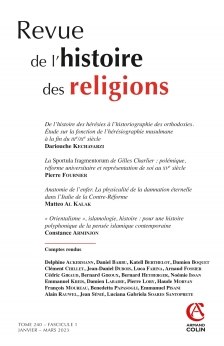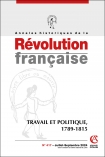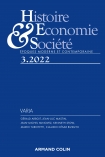
Revue de l'histoire des religions (1/2023)
Pour acheter ce numéro, contactez-nous
Recevez les numéros de l'année en cours et accédez à l'intégralité des articles en ligne.
Par rapport aux études sur la construction de l’au-delà chrétien, cette recherche se concentre sur deux ouvrages qui ont codifié l’au-delà infernal dans le contexte italien au début de la Contre-Réforme. En particulier, on examine le compendium La grandezza et larghezza et distanza di tutte le sfere de l’humaniste Giovanni Maria Bonardo († 1590), et le traité De inferno et statu daemonum, du théologien milanais Antonio Rusca († 1655). Le livre de Bonardo présente un enfer placé au centre d’un univers aristotélicienptolémaïque, avec des dimensions calculées et précises. Le livre de Rusca, en revanche, examine l’emplacement du royaume du mal avec une approche intégralement théologique. De la comparaison entre les deux oeuvres émerge le caractère indispensable de la dimension physique de l’enfer dans la perspective catholique. En conclusion, on propose une possible catégorisation des modèles d’enfer élaborés au début de l’ère moderne.
In relation to scholarship on the construction of the Christian afterlife, this research focuses on two works that codified the infernal underworld in the Italian context at the beginning of the Counter-Reformation. In particular, the book La grandezza et larghezza et distanza di tutte le sfere by the humanist Giovanni Maria Bonardo († 1590) and the treatise De inferno et statu daemonum, by the Milanese theologian Antonio Rusca († 1655), are considered. Bonardo’s book presents a hell placed at the centre of an Aristotelian-Ptolemaic universe, with calculated and precise dimensions. Rusca’s book, on the other hand, examines the location of the kingdom of evil with an entirely theological approach. From the comparison between the two works emerges the indispensability of the physical dimension of hell from the Catholic perspective. In conclusion, a possible categorization of the models of hell developed at the beginning of the modern era is proposed.

